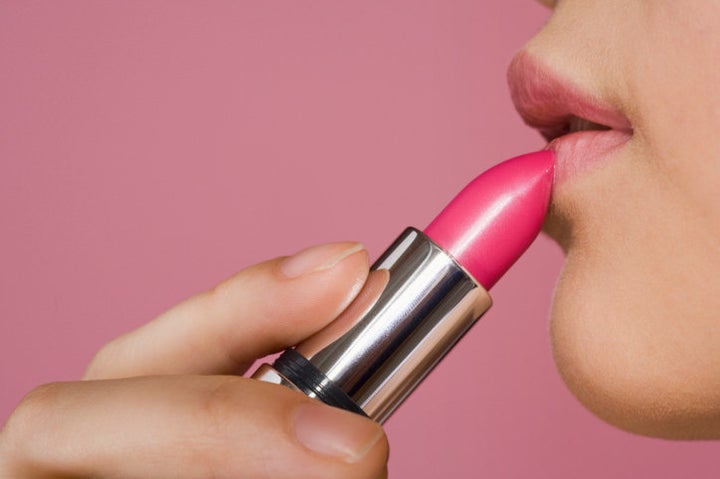
The 1938 Federal Food Drug and Cosmetic Act (FFDCA), explicitly stipulates: "Each ingredient used in a cosmetic product and each finished cosmetic product shall be adequately substantiated for safety prior to marketing." In the absence of adequate evidence of safety, products must be conspicuously labeled on their principle display panel: "WARNING: THE SAFETY OF THIS PRODUCT HAS NOT BEEN DETERMINED." Furthermore, the Food and Drug Administration (FDA) was authorized to pursue enforcement action after a product containing dangerous ingredients had been marketed.
However, in spite of such explicit pre-and-post-marketing authority, the FDA has taken no regulatory action whatsoever over the last six decades to protect the public from unknowing exposures to a wide range of toxic ingredients in cosmetic and personal care products. These include allergens, hormones, carcinogens and their precursors.
On November 17, 1994, the Cancer Prevention Coalition, the Ovarian Cancer Early Detection Prevention Foundation, and the Health and Medicine Policy Research Group filed a Citizens' Petition to FDA Commissioner, David Kessler, M.D., on the dangers of talc. This was based on 17 scientific references dating back to the 1960's. These detailed the scientific evidence of major lethal risks of ovarian cancer, particularly in African-American women, from genital dusting with cosmetic grade talc. However, the Petition was rejected.
In May 2008, the Cancer Prevention Coalition, together with directors or representatives of six major national public health organizations, filed a further Petition to FDA Commissioner, Dr. Andrew von Eschenbach, based on additional scientific evidence, "seeking a cancer warning on cosmetic talc products." However, the FDA remained unresponsive.
Not surprisingly, on September 10, 1997, Senator Kennedy warned that "the cosmetic industry has borrowed a page from the playbook of the tobacco industry." However, this is an understatement, as cigarette packs carry an explicit cancer warning, and smoking is uncommon until early adult life. In striking contrast, exposure to cosmetics and personal care products can be lifelong, following their use by pregnant women, and absorption of toxic ingredients through the skin, into the blood and then reaching the fetus.
On May 11, 2007, the Cancer Prevention Coalition, Organic Consumers Association, Family Farm Defenders, and Institute for Responsible Technology, filed a Citizens' Petition to FDA Commissioner Andrew von Eschenbach, M.D., on the wide range of undisclosed dangers of genetically engineered, commonly known as rBGH, milk.
The Petition detailed the veterinary toxicity of rBGH. It also detailed the wide range of abnormalities in the composition of rBGH milk, particularly the 10-fold or more increased levels of a natural growth factor known as IGF-1, and its ready absorption from the small intestine into the blood; IGF-1 levels in milk are further increased by pasteurization. Drinking this milk results in major increased risks of colon, prostate and breast cancers. Increased IGF-1 levels also block natural defense mechanisms, known as programmed self-destruction, against early submicroscopic cancers. However, the FDA remained unresponsive to the Petition.
On January 12, 2010, the 2007 Citizen's Petition seeking the withdrawal of rBGH was re-filed to FDA Commissioner Margaret Hamburg, M.D. However, she rejected the Petition, this time on the basis of alleged technical grounds, which had not been previously invoked.
An even more recent example of FDA's irresponsibility has received prominent emphasis in the prestigious May 6, 2010 President's Cancer Panel (PCP) Report, with illustrative regard to an ingredient known as bisphenol-A (BPA). This is widely used as an unlabeled plasticizer in baby bottles, food containers and also as an ingredient in cosmetics and personal care products. The President's Cancer Panel explicitly warned that BPA "is a chemical of concern," and that "more than 30 studies have linked BPA to breast cancer, obesity, diabetes and other disorders." The Panel also summarily rejected, as "incomplete and unreliable," FDA's claims that BPA is safe, and "that neither a ban on the chemical or labeling of BPA-containing products was warranted."
Senator Frank Lautenberg's "Safe Chemicals Act of 2010" requires manufacturers to provide information on "chemicals of concern" in consumer products. To say the least, this is timely. Such information would provide the public with information on the dangers of these products, especially as the FDA has failed to do so since passage of the 1938 Federal Food, Drug, and Cosmetic Act. Clearly, Congressional investigation and drastic reform of the FDA is decades overdue.
Click here to endorse these concerns.
Samuel Epstein, M.D.
Professor emeritus of Environment and Occupational Medicine
University of Illinois at Chicago School of Public Health
Chairman, Cancer Prevention Coalition, www.preventcancer.com
Chicago, Illinois
epstein@uic.edu
Author of the 2009 "Toxic Beauty," and the 2006 "What's In Your Milk?" books.
Lennart Hardell, MD, PhD
Professor
Department of Oncology
University Hospital
Orebro, Sweden
Vicente Navarro, MD, PhD
Professor of Health Policy
The Johns Hopkins Medical Institutions
Baltimore, Maryland
Janette D. Sherman, MD
Adjunct Professor Environmental Institute
Western Michigan University
Kalamazoo, Michigan
Quentin D. Young, MD
Public Health Advocate, State of Illinois
Past President American Public Health Association
Chairman, Health and Medicine Policy Research Group
Chicago, Illinois